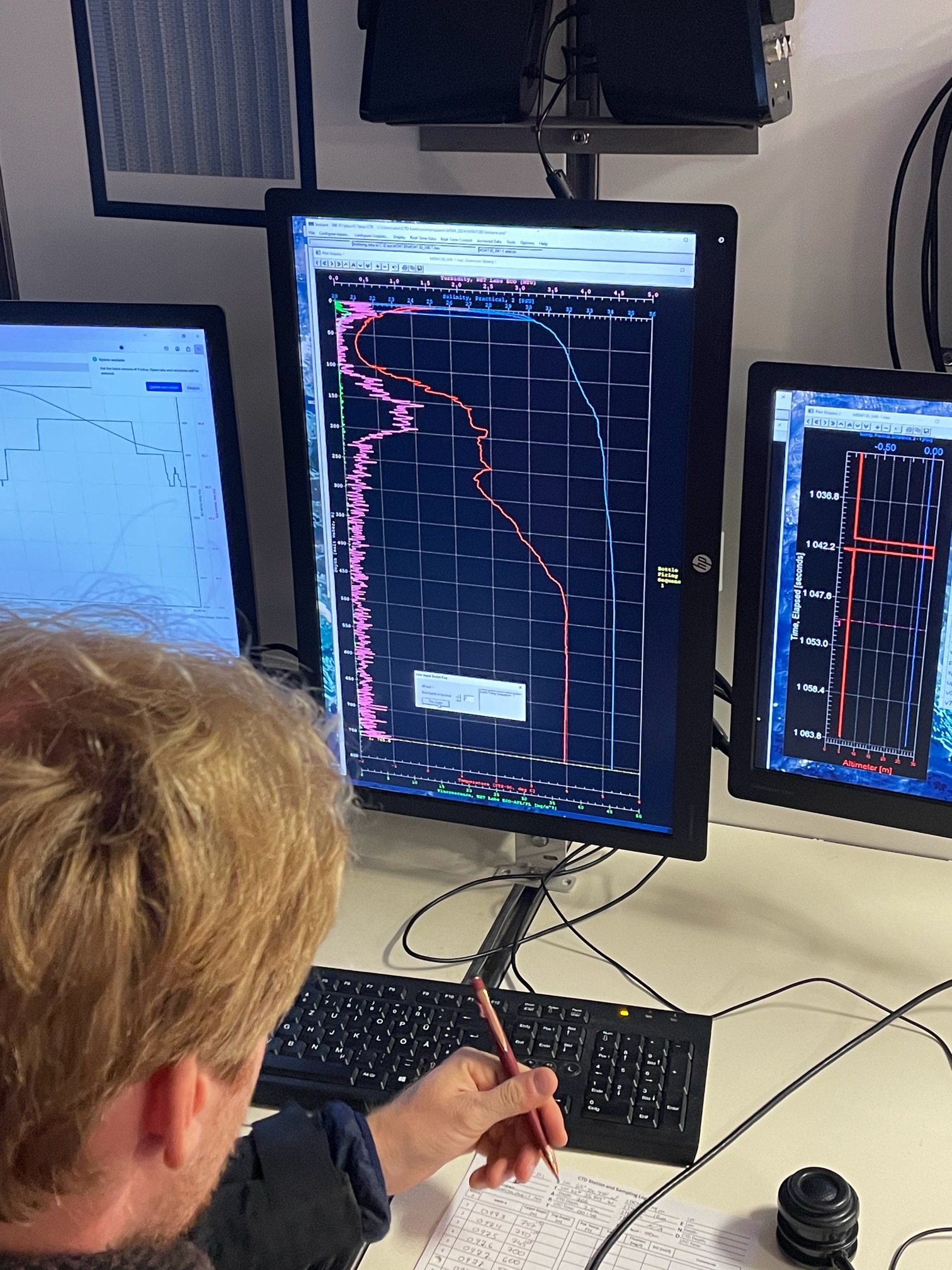A key reason why we are in this remote region is that the coastal ocean here is very dynamic. Currents from the north bring sea ice and freezing cold polar water southwards along the coastline, a broad and productive shelf region hosts large mammal populations, and fjords cutting into the land from the ocean act as a key interface with the Greenland Ice Sheet.
At most locations, the first event on the ship is a CTD profile, this gives us information about the water column at that location. In good weather conditions we get a full profile of the ocean from the surface down to about 2 m from the sediments (any close than this risks touching the sea floor and damaging the delicate instruments onboard). Some of the data collected is available in real-time in the CTD lab, so we can adjust our sample plans to what we find.
Our physical oceanography team, Lukas and Hilde are always keen to evaluate the data as it comes in, looking for any ‘unusual’ or ‘interesting’ features in the water column. Here a profile from our 2nd fjord site shows exactly that, in the middle of the water column a thick layer or high turbidity has registered on our sensors. We cannot be sure exactly what this is without further analysis, but it’s too deep to be a biological signal (and there are no chlorophyl anomalies at the same depths), so it’s likely we’re seeing a particle-rich layer coming off Greenland. We will close several sample bottles at these depths and assess what this plume is made from and how it’s affecting the surrounding ocean.
